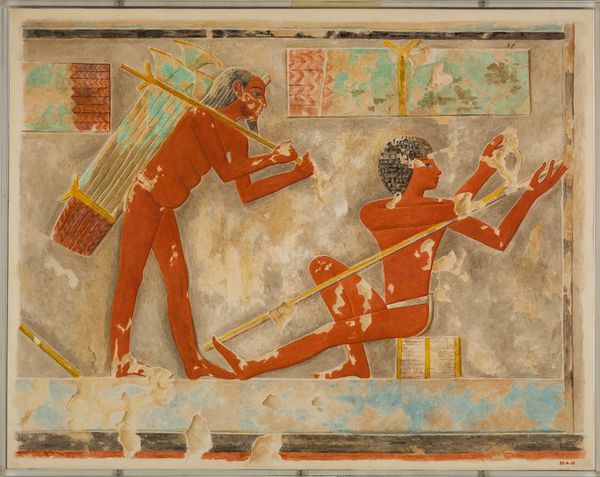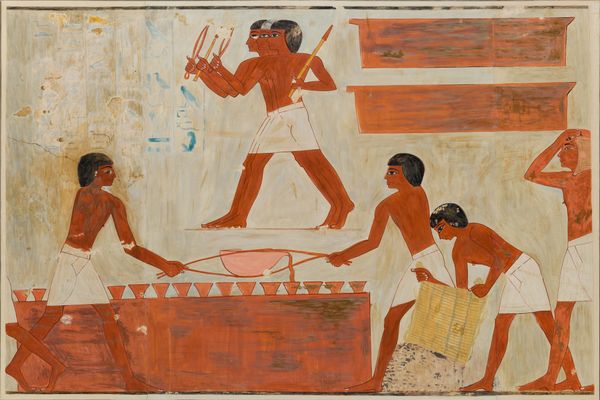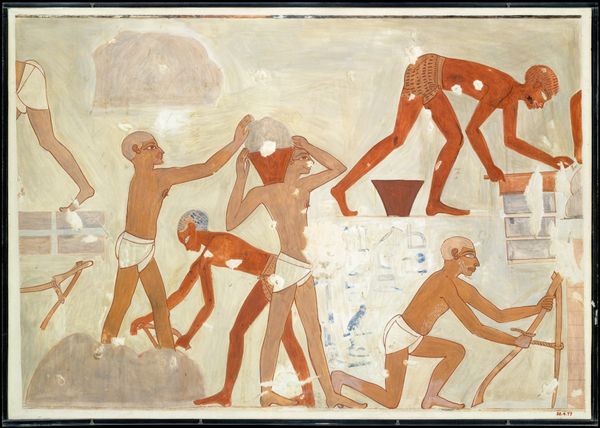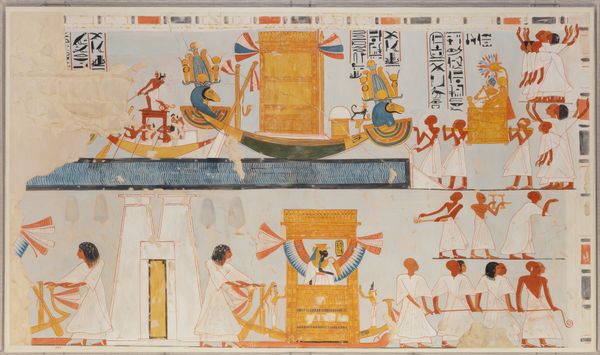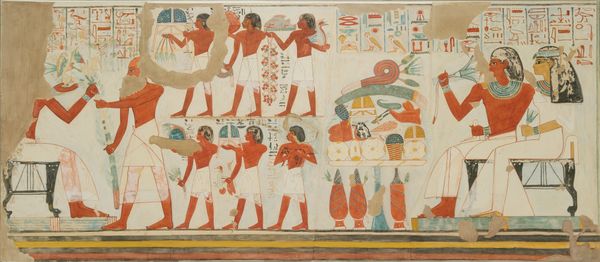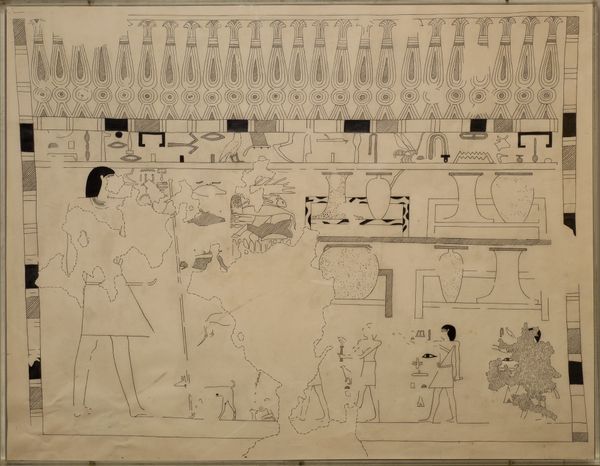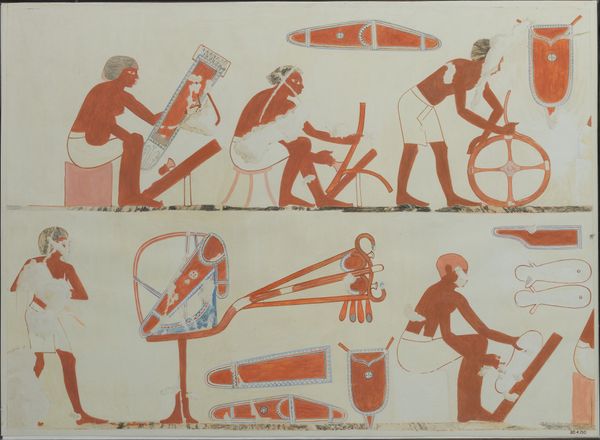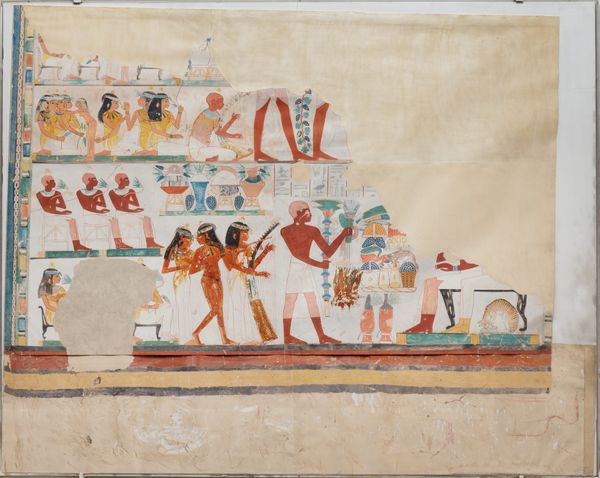
watercolor
#
fish
#
narrative-art
#
landscape
#
ancient-egyptian-art
#
figuration
#
watercolor
#
egypt
#
ancient-mediterranean
#
men
#
genre-painting
Dimensions: H. 39.5 cm (15 9/16 in); w. 60.5 cm (23 13/16 in) scale 1:1
Copyright: Public Domain
Curator: Immediately I notice the two-dimensional representation, a very characteristic feature of Ancient Egyptian art. The painting almost feels like a carefully constructed diagram rather than a scene attempting realistic depiction. Editor: Precisely. What we see is a watercolor called "Men Preparing Fish." Dating back to 1473 BC, it's currently held at the Metropolitan Museum of Art. Its clear objective was to illustrate the daily activity. Curator: It's fascinating how they communicate social structures, isn't it? Even in a mundane scene of fish preparation. Who these men were—slaves, workers—is deeply interwoven into every aspect of this imagery and its intended viewing context. It certainly reflects the institutional power of its time. Editor: Agreed, and looking closer, observe the meticulous use of color— the deep oranges contrasting with the cool blues of the fish. And how shapes are employed repetitively, such as in the rows of fish, adding rhythm and a sort of...structured chaos, I would say. Curator: The art also reveals economic dimensions. Consider the fish represented here; beyond dietary significance, these scenes held importance in rituals of provisioning the afterlife, and display labor management for elite viewership. It tells a vivid, painted story of the everyday shaped by class. Editor: The spatial arrangements themselves! They flatten the space yet organize figures clearly across different actions within what looks like an open workshop; it makes you focus intently on discrete pictorial elements, each significant yet forming part of a larger visual complex. Curator: And yet what can be made of the deliberate, systematic lack of realism that transcends aesthetics? Could that flatness perhaps be an imposition driven by what elites consider to be the only truth worthy of portrayal in commemorative contexts? A deliberate choice reflective of hierarchies? Editor: Possibly! I'm stuck admiring their visual problem-solving. I agree that while we interpret, consider also how expertly this resolves flatness, graphic quality, rhythm, contrast - formal qualities still resonating even divorced from that past world it aimed to portray. Curator: Thinking about our discussion, it’s rewarding to bridge questions of social role to concrete details of execution to more holistically interpret this Ancient Egyptian watercolor! Editor: Agreed! Approaching the artwork with those combined frames gives viewers greater context to truly begin experiencing and appreciating its subtleties and achievements.
Comments
No comments
Be the first to comment and join the conversation on the ultimate creative platform.



